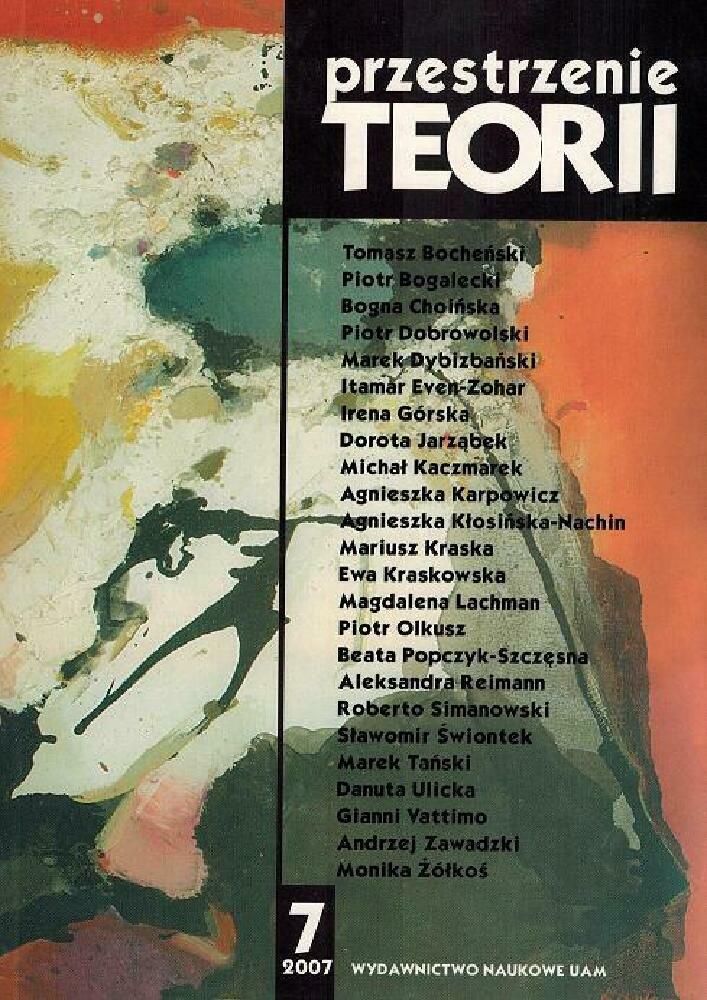Abstrakt
The article investigates the relationship between Polish fiction and a variety of aspects of visual culture. Contemporary culture has reached a stage in which images hołd central position. Consequently, word, as a medium of communication, is marginalised in favour of visual ways of conveying messages. Novels which have appeared after 1989 provide more than enough examples of close links between literature and visuality. Writers themselves are engaged in various projects which depart from traditional literature based on written text and engage in multi-media projects related to film, photography, advertisement or simply visual arts. Moreover, literary criticism accompanying new literature often falls back on visual imagery taken straight from visual arts; most literary reviewers find it handy to employ terms and concepts developed in the field of film criticism or used in writing about comic books and television. What is more, some writers take pride in creating literature designed to be watched rather than read. The inner mechanisms of literary market seem to promote visuality over textuality. Writers and critics want and love to occupy TV screens; they cultivate their public image and turn it into a marketable logo. Many PR strategies are involved to achieve fuli recognition of their name and work. The implied assumption behind these strategies is that literature alone is not attractive enough to be left outside of the reach of powerful media. This assumption can be seen not only in writers' public appearances but also in novels they write. Motifs, self-conscious comments, form and structure as well as typographic layout on the page are the basie means to emphasise that visuality remains at least as important as written text. The article presents the most significant devices used to visualise literature after 1989. Furthermore, it compares contemporary fiction with the modernist literature where most of these techniques originated from.Licencja
Autorzy
Autorzy tekstów przyjętych do publikacji w czasopiśmie „Przestrzeniach Teorii” są zobowiązani do wypełnienia, podpisania i odesłania na adres redakcji umowy o udzielenie nieodpłatnej licencji do utworów, z zobowiązaniem do udzielania sublicencji CC.
Zgodnie z umową, autorzy tekstów opublikowanych w czasopiśmie „Przestrzeniach Teorii” udzielają Uniwersytetowi im. Adama Mickiewicza w Poznaniu niewyłącznej i nieodpłatnej licencji oraz zezwalą na użycie sublicencji Creative Commons Attribution-NonCommercial-NoDerivatives 4.0 International (CC BY-NC-ND 4.0).
Autorzy zachowują prawa do dalszego, swobodnego rozporządzania utworem.
Autorzy, którzy wykorzystują w swoim tekście cudze utwory (np. ilustracje, fotografie) proszeni są o dostarczenie do redakcji czasopisma zgodę na publikację od uprawnionych podmiotów.
Użytkownicy
Zainteresowani użytkownicy internetu uprawnieni są do korzystania z utworów opublikowanych po 2015 roku „Przestrzeniach Teorii” tylko w calach niekomercyjnych, pod następującymi warunkami:
- uznanie autorstwa - obowiązek podania wraz z rozpowszechnionym utworem, informacji, o autorstwie, tytule, źródle (odnośniki do oryginalnego utworu, DOI) oraz samej licencji;
- bez tworzenia utworów zależnych - utwór musi być zachowany w oryginalnej postaci, nie można bez zgody twórcy rozpowszechniać np. tłumaczeń, opracowań.
Do wszystkich tekstów opublikowanych przed 2015 r. prawa autorskie są zastrzeżone.
Inne
Uniwersytet im. Adama Mickiewicza w Poznaniu zachowuje prawo do czasopisma jako całości (układ, forma graficzna, tytuł, projekt okładki, logo itp.).
